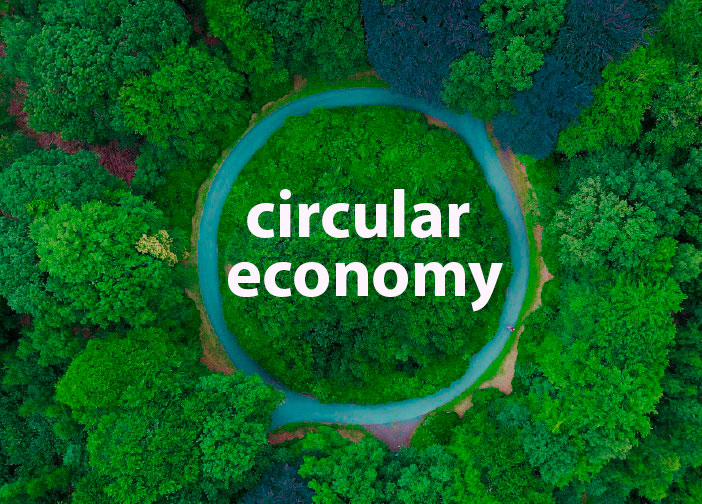
The Circular Economy: A New Approach to Recycling and Sustainability
In recent years, the circular economy has emerged as a new approach to sustainability that emphasizes reducing waste and promoting reuse and recycling. Unlike the traditional linear economy, which follows a “take-make-dispose” model, the circular economy aims to create a closed-loop system where materials are continually reused, recycled, and repurposed.
What is the circular economy?
It is a system where waste is minimized, and materials are reused and recycled as much as possible. The goal is to create a closed-loop system where materials are continually cycled through the economy rather than being discarded after a single use. This can help to reduce waste, conserve resources, and promote sustainability.
How does the circular economy work?
It involves several key principles, including:
- Designing products for durability and reuse: Products are designed to last longer. They are easily repaired and reused rather than being discarded after a short period of use.
- Recycling and repurposing materials: Materials are recycled and repurposed as much as possible. This creates a closed-loop system where waste is minimized.
- Shifting to renewable energy: The circular economy also emphasizes the use of renewable energy sources. This aims to reduce dependence on fossil fuels and promote sustainability.
What is the role of recycling in the circular economy?
Recycling is a crucial component of the circular economy. By recycling materials, we can reduce waste and conserve resources. Rather than discarding materials after a single use, we can recycle them and use them to create new products. As a result, this reduces the need to extract new resources from the environment.
How does recycling work in the circular economy?
In this system, recycling is not just about separating materials and sending them to recycling facilities. Instead, it involves a more comprehensive approach to waste management. The system emphasizes reducing waste at the source, designing products for reuse and recycling, and promoting closed-loop systems where materials are continually recycled and repurposed.
One way to promote recycling in the circular economy is through extended producer responsibility (EPR). Under EPR, manufacturers are responsible for the entire lifecycle of their products. This includes the disposal and recycling of materials. Furthermore, this action incentivizes manufacturers to design products that are easier to recycle and promote closed-loop systems where materials are continually reused and recycled.
What are the benefits of the circular economy and recycling?
They have several benefits, including:
- Reducing waste: Closed-loop systems promote where materials are continually recycled and repurposed. The circular economy can help to reduce waste and conserve resources.
- Conserving resources: By reusing and recycling materials, we can conserve natural resources and reduce the need to extract new resources from the environment.
- Promoting sustainability: The circular economy and recycling can help to promote sustainability by reducing our impact on the environment and promoting a more responsible use of resources.
- Creating new economic opportunities: The circular economy can also create new economic opportunities by promoting the development of new products and industries based on recycled and repurposed materials.
What are some examples of the circular economy in action?
There are several examples of the circular economy in action, including:
- Zero-waste grocery stores: Some grocery stores have adopted a zero-waste approach. At these stores, customers bring their own containers and purchase products in bulk. This reduces packaging waste and promotes reuse.
- Reusable packaging: Many companies are adopting reusable packaging, where customers return packaging to be cleaned and reused rather than discarding it after a single use.
- Upcycling: Upcycling involves taking materials that would otherwise be discarded and repurposing them to create new products. For example, old clothing can be upcycled into new garments or accessories.
- Closed-loop systems: Closed-loop systems involve recycling and repurposing materials as much as possible, creating a closed loop where waste is minimized. For example, some companies are recycling plastic waste to create new products such as furniture or building materials.
In conclusion, the circular economy is a new approach to sustainability that emphasizes reducing waste and promoting reuse and recycling. Recycling plays a crucial role in the circular economy by reducing waste and conserving resources. By promoting closed-loop systems where materials are continually recycled and repurposed, we can create a more sustainable future while also creating new economic opportunities.
If you liked this article, you might also be interested in Impact of Smart Reverse Vending Machines on Recycling and Deposit Collection

